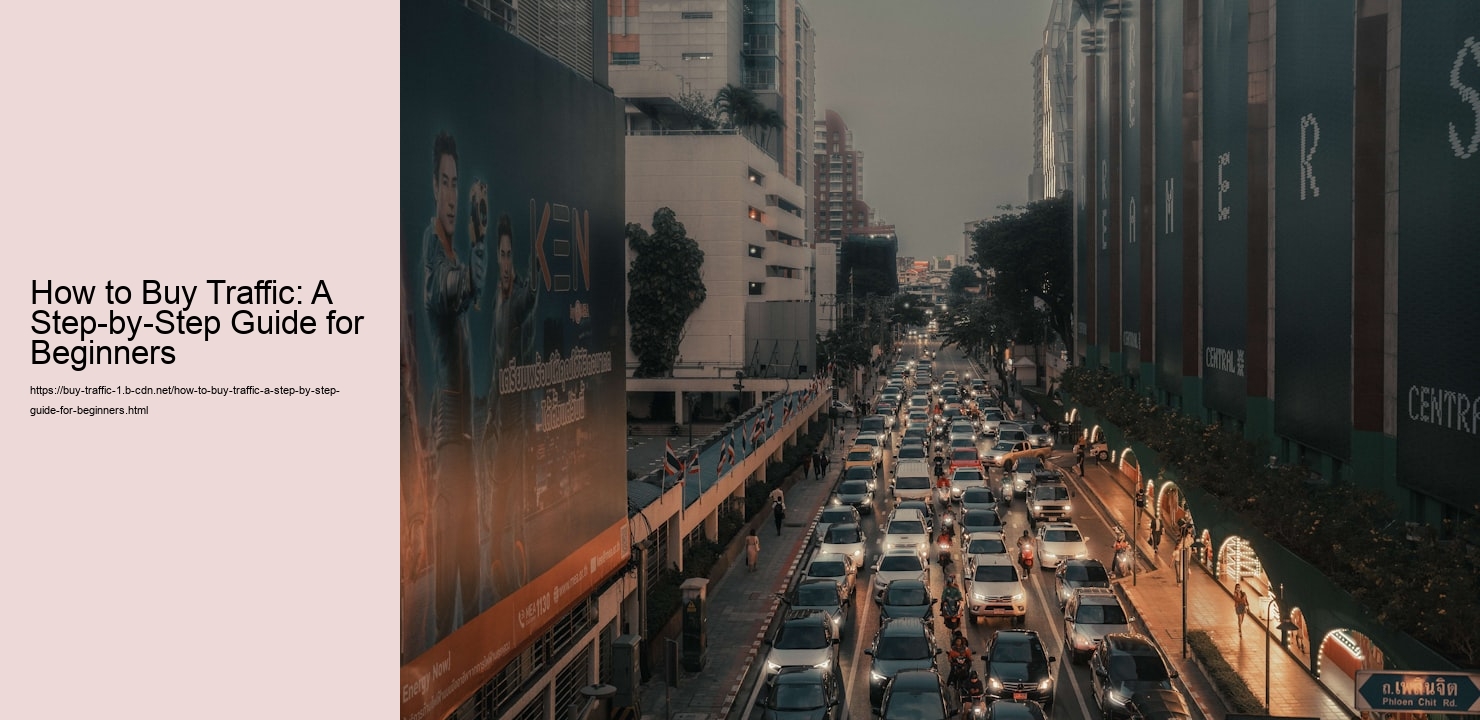How to Buy Traffic: A Step-by-Step Guide for Beginners
Find out more about how to Buy Traffic here.
In the digital world, where competition for attention is fierce, businesses and website owners are constantly on the lookout for effective strategies to increase their online visibility. One such strategy is buying traffic, a method that can significantly boost your websites visitor numbers, enhance your online presence, and ultimately drive your business forward. For beginners, this might seem like a daunting task, but with a clear understanding and a strategic approach, buying traffic can be an invaluable tool. In this guide, we will break down the process of buying traffic into manageable steps, ensuring that even those new to the concept can navigate it successfully.
Step 1: Define Your Goals
Before diving into the process of buying traffic, its crucial to define your objectives. Are you looking to increase brand awareness, generate leads, or drive sales? Having a clear understanding of your goals will help you tailor your approach and select the right traffic sources. It will also provide a benchmark against which you can measure the success of your traffic-buying efforts.
Step 2: Identify Your Target Audience
Knowing your target audience is fundamental to any marketing strategy. Understand who your ideal customers are, what their interests and behaviors might be, and where they are most likely to be found online. This knowledge will help you choose the right platforms and channels to buy traffic from, ensuring that your efforts are directed towards those most likely to engage with your website.
Step 3: Choose the Right Traffic Sources
There are several platforms and networks available for buying traffic, each with its own strengths and weaknesses. Popular options include Google Ads, Facebook Ads, and native advertising networks like Taboola and Outbrain. Evaluate these platforms based on your objectives and target audience. Consider factors such as the type of content they support, the level of control they offer over targeting, and their pricing models.
Step 4: Set a Budget
Setting a budget is a critical step in the process of buying traffic. Determine how much you are willing to spend and how this investment aligns with your overall marketing budget. It is important to start small, especially if you are new to buying traffic, and gradually increase your expenditure as you gain more insights into what works for your business. Keep in mind that buying traffic is an investment, and like any investment, it requires careful monitoring and adjustment to yield the best returns.
Step 5: Create Compelling Ad Content
Once you have chosen your platforms and set a budget, the next step is to create compelling ad content. Your ads should be engaging, relevant, and tailored to your target audience. Use clear and concise language, compelling visuals, and a strong call-to-action to encourage clicks. A/B testing different versions of your ads can provide valuable insights into what resonates most with your audience, allowing you to optimize your campaigns for better results.
Step 6: Monitor and Optimize
After launching your traffic-buying campaign, its essential to monitor its performance closely. Use analytics tools to track key metrics such as click-through rates, conversion rates, and return on investment. This data will help you identify which aspects of your campaign are working and which need improvement. Be prepared to make adjustments to your targeting, budget, or ad content based on these insights to ensure that your traffic-buying efforts are as effective as possible.
Step 7: Evaluate and Adapt
Finally, evaluate the overall success of your traffic-buying efforts in relation to your initial goals. Consider what you have learned from the process and how you can apply these insights to future campaigns. The digital landscape is constantly evolving, and staying adaptable is crucial to maintaining success. Use your experiences to refine your strategies and continue to grow your online presence.
In conclusion, buying traffic can be a powerful tool for increasing your websites visibility and driving business growth. By defining your goals, understanding your audience, choosing the right platforms, setting a budget, creating compelling content, and continuously monitoring and optimizing your efforts, you can effectively harness the potential of traffic buying. With time and experience, even beginners can master this strategy and achieve their online marketing objectives.
